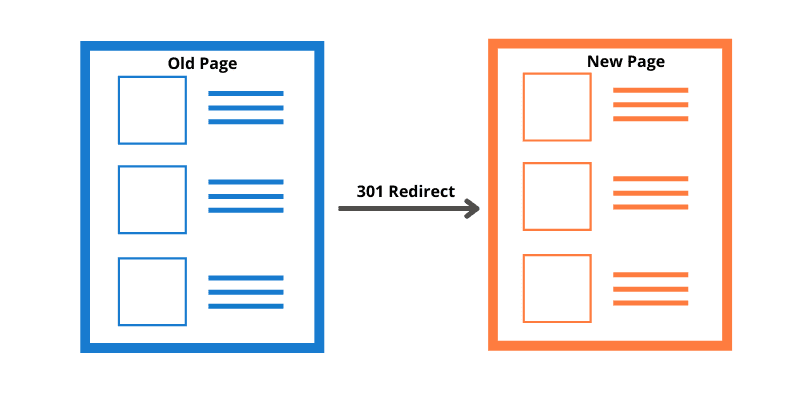Master the Art of Applying 301 Redirects for Better Search Engine Optimization Performance
Executing 301 redirects is an essential element of web site monitoring that can significantly impact SEO performance. The capability to effortlessly guide web traffic from old Links to new ones is vital for keeping search engine positions and customer experience. Nonetheless, understanding the art of applying 301 reroutes involves more than just fundamental redirection. It requires a deep understanding of best practices, meticulous surveillance, and the capacity to repair typical problems that may arise. By diving right into the subtleties of this procedure, web site owners can unlock the complete potential of their search engine optimization strategies and make sure a smooth shift for both individuals and online search engine alike.

Value of 301 Redirects
When considering web site optimization, the significance of carrying out 301 redirects can not be overstated. A 301 redirect is a long-term redirect from one URL to another.

Setting Up 301 Redirects
Given the essential duty that 301 redirects play in keeping search engine optimization worth and boosting customer experience, developing these redirects properly is critical for site optimization. To set up 301 reroutes successfully, start by recognizing the URLs that need redirection. This entails understanding which web pages have been gotten rid of or transformed and mapping out the brand-new destinations for these Links. Next, access your internet site's web server to execute the redirects. This can be done through server-side arrangements or making use of plugins if you're making use of a content administration system like WordPress. When creating the redirects, make certain that each old URL is rerouted to the matching brand-new URL with a 301 status code, suggesting an irreversible relocation. Additionally, regularly keep an eye on the performance of your redirects utilizing tools like Google Browse Console to identify any kind of problems or mistakes that may develop. By vigilantly establishing and keeping an eye on 301 redirects, you can keep SEO equity, boost individual experience, and make sure that site visitors are flawlessly guided to the appropriate material on your website.
Finest Practices for 301 Redirects
To make certain optimum performance and maintain SEO stability, adhering to best practices when carrying out 301 redirects is necessary. To start with, it is critical to redirect individual pages to their new matchings as opposed to merely sending all website traffic to the homepage. This makes certain a smooth individual experience and maintains the link equity connected with the particular page (301 Redirect). Additionally, it is advised to make use of 301 reroutes rather than 302 redirects, as internet search engine analyze 301 redirects as a permanent change in address, moving the search engine optimization value to the new page. Furthermore, it is advisable to restrict the variety of redirects in a chain to avoid prospective problems with crawling and indexing. Frequently keeping an eye on and updating redirects is also key, especially when reorganizing websites or changing Links. Last but not least, producing a custom-made 404 mistake page can help users browse the site if they experience broken links. By adhering to these ideal techniques, internet sites can properly handle 301 redirects to helpful resources enhance SEO performance and customer contentment.
Monitoring 301 Redirects Efficiency
Successfully tracking the effectiveness of 301 redirects is necessary for keeping SEO performance and making sure a smooth user experience. To check 301 reroutes performance, webmasters can use devices like Google Look Console to recognize any kind of problems such as redirect loopholes, chains, or mistakes that might adversely impact SEO rankings. Consistently looking for crawl errors and keeping an eye on the natural website traffic patterns post-redirect execution can provide valuable insights into the success of the redirects.
Additionally, establishing appropriate analytics tracking, such as establishing particular goals or events in Google Analytics, can help measure the impact of 301 redirects on user behavior and conversions. This data can offer a comprehensive view of just how customers are interacting with the redirected web pages and whether the redirects are successfully assisting individuals to the designated destination.
Continual tracking and analysis of 301 redirects efficiency enable for timely adjustments and optimizations to ensure that the redirects are properly offering their function of maintaining search engine optimization equity and supplying a seamless browsing experience for customers. 301 Redirect.
Troubleshooting Common 301 Redirect Concerns
Monitoring the efficiency of 301 redirects can expose usual problems that may hinder their performance in maintaining search engine optimization equity and individual experience. One common problem is redirect chains, where one redirect brings about one more in a sequence, triggering delays in web page loading and potentially influencing SEO positions. It is important to audit reroutes routinely to recognize and eliminate such chains. An additional issue to see out for is redirect loops, where web pages redirect per other in a limitless loophole, leading to an inadequate user experience and adversely affecting SEO. Validating redirect destinations is necessary to prevent such loops. In addition, improper application of 301 redirects, such as making use of short-term redirects (302) rather of irreversible ones (301 ), can result in shed search engine optimization worth. Making sure that all redirects are appropriately set up as 301 redirects is crucial for keeping SEO equity. By troubleshooting these typical redirect concerns quickly, web site proprietors can optimize their SEO efficiency and boost user fulfillment.
Verdict
In verdict, grasping the application of 301 redirects can considerably enhance SEO performance by keeping internet site web traffic circulation and protecting internet search engine positions. By comprehending the value of 301 redirects, establishing click here for info them up correctly, following ideal techniques, monitoring their performance, and troubleshooting usual concerns, web site owners can ensure a smooth customer experience and maximize their online visibility. It is necessary for organizations to focus on the correct use of web link 301 redirects to improve their overall search engine optimization method.
Given the essential function that 301 redirects play in maintaining Search engine optimization value and boosting customer experience, establishing these redirects appropriately is vital for website optimization - 301 Redirect. In addition, it is recommended to make use of 301 redirects rather of 302 redirects, as search engines interpret 301 reroutes as a permanent adjustment in address, transferring the Search engine optimization value to the brand-new web page. To keep an eye on 301 redirects efficiency, web designers can use devices like Google Look Console to determine any kind of issues such as redirect loopholes, chains, or mistakes that may adversely impact Search engine optimization rankings. Furthermore, inappropriate implementation of 301 redirects, such as utilizing temporary redirects (302) instead of irreversible ones (301 ), can lead to lost Search engine optimization value. Making sure that all redirects are correctly set up as 301 redirects is essential for maintaining SEO equity